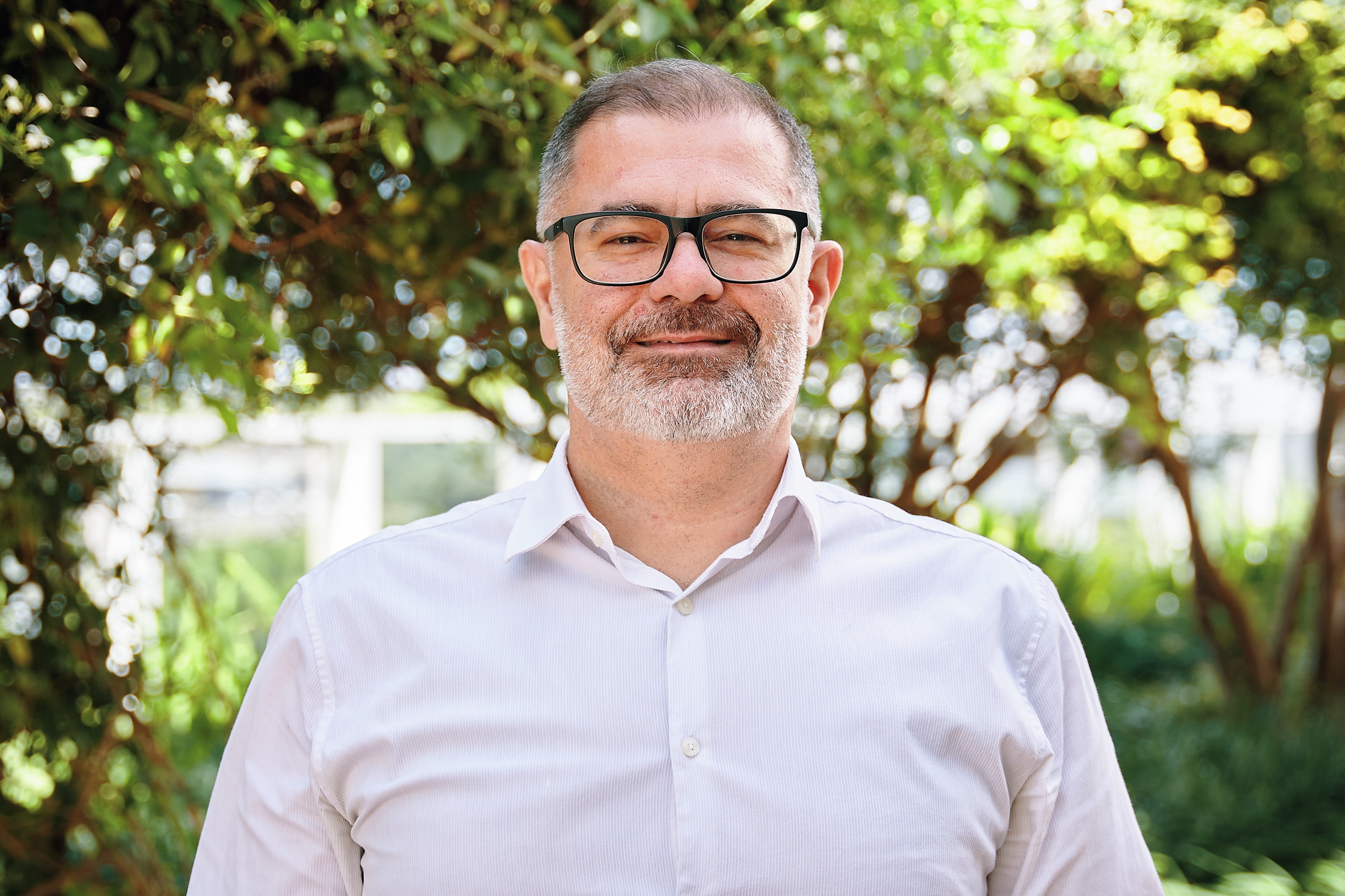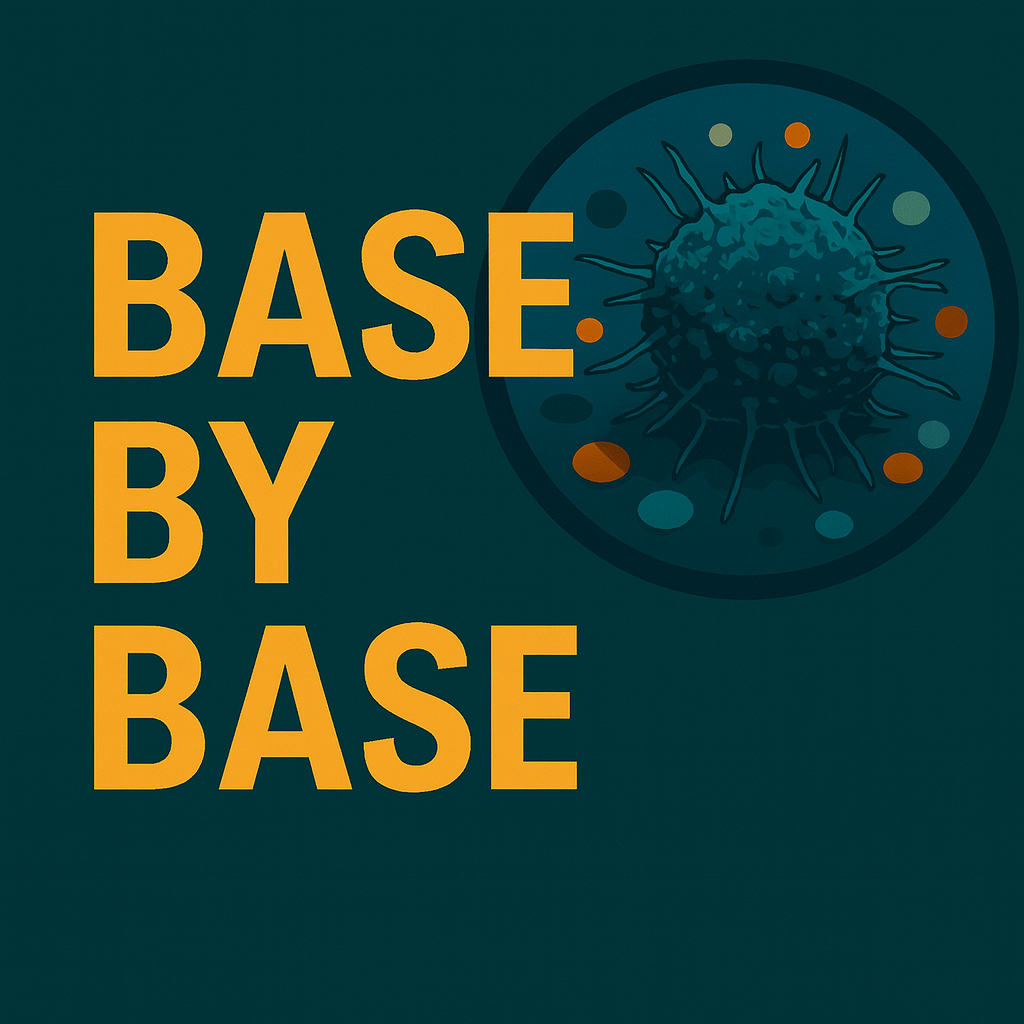Episode Transcript
[00:00:14] Speaker A: Welcome to base by base, the paper cast that brings genomics to you wherever you are.
Okay, so think about this. Treating cancer, it's often like this intense chess match, right? Between doctors and the tumor itself. Every time we make a move with therapy, the tumor seems to have a counter move. It just adapts, evolves even. So, what if we could actually see it coming? Like, get a clear genomic signal telling us, hey, this therapy, it's starting to fail. It's a huge deal because, well, tumors aren't just static things we target. They're incredibly dynamic. They mutate, they change, they build up resistance. And a lot of that is driven by something called intra tumor heterogeneity.
[00:00:52] Speaker B: Right. The fact that a tumor isn't just one type of cell, but this diverse mix.
[00:00:56] Speaker A: Exactly. A whole community constantly shifting. And that complexity, Honestly, it's one of the biggest headaches in oncology.
[00:01:03] Speaker B: It really is.
[00:01:03] Speaker A: So the big question is, how do we cut through all that noise? How do we find a clear, maybe even universal warning sign? Something that helps doctors make, you know, better, faster decisions, life saving ones?
Well, that's exactly the deep dive we're taking today. And today we really want to celebrate the groundbreaking work of a dedicated team who tackled this exact challenge. Ares Percy, Praneeth R. Citalagunta, Yuri I. Wolf, Rafael R. Canavarolo, Mehdi Damagi, Kenneth H. Shane, Ariel Sto e. Silva, and Eugene V. Koonin.
[00:01:37] Speaker B: Yeah, their collective expertise is quite impressive. They span institutions like the National Institutes of Health, the H. Lee Moffitt Cancer Center, Stony Brook University.
And their work has really pushed forward our understanding of how tumors evolve, especially under that intense pressure from therapy.
[00:01:52] Speaker A: Okay, so let's unpack that a bit. Why is understanding this tumor evolution piece so critical, Especially when we talk about treatment resistance? What's really at stake?
[00:02:00] Speaker B: Well, at its heart, tumor evolution kicks off with these things called driver mutations. These are specific genetic changes that basically flip a switch. They turn a normal cell into a cancerous one, give it a growth advantage.
[00:02:13] Speaker A: It's a starting point.
[00:02:14] Speaker B: Exactly. And that process quickly leads to intra tumor heterogeneity, where the tumor becomes this diverse collection of genetically different subclones.
[00:02:23] Speaker A: Like a mixed b.
[00:02:25] Speaker B: Precisely. And while that's fascinating from an evolutionary biology standpoint, clinically, it's a major hurdle. It's like the tumor's toolkit for survival. It boosts its ability to resist pressure, whether that's from our immune system spreading to new places or, critically, the therapies we throw at it.
[00:02:41] Speaker A: Right. Given that relentless Evolution, we obviously need ways to track it, like, in real time. What core parameters did these researchers zoom in on to try and characterize this?
[00:02:52] Speaker B: So this study really focuses on two.
Let's call them universal parameters. First, there's the overall mutational burden. That's basically just the total count of non synonymous mutations. The ones that actually change the protein sequence. We just call that N. Okay, N for number. Right. And second, the strength of selection acting on those proteins. This is defined by a ratio, the rate of non synonymous mutations versus synonymous ones. That's the DNDS ratio.
[00:03:17] Speaker A: Ah, dnds.
That ratio comes up a lot in evolution. It feels like the key here.
For anyone needing a quick refresher, can you walk us through what those different DNDS values generally tell us?
[00:03:29] Speaker B: Absolutely. It's a pretty neat concept. Think of it like this. If DNDS is close to one that suggests neutral evolution, it means mutations are popping up somewhat randomly without strong selection, really pushing them one way or the other. Kind of like genetic drift.
[00:03:43] Speaker A: Just happening.
[00:03:43] Speaker B: Just happening. Yeah. Now, if the ratio is greater than 1. So DNDS, 1, that signals positive selection here, mutations are actively favored because they give an advantage, like those early driver mutations, making the tumor grow faster.
Right. And finally, if the ratio is less than 1, DNDS, one that points to purifying selection, this means harmful mutations, ones that might slow the tumor down, are being actively weeded out, selected against.
[00:04:09] Speaker A: Okay, so we have N. The sheer number of mutations and DNDs, the kind of evolutionary pressure, how do those two things work together to paint a picture of, well, tumor fitness? Because that's what treatment is trying to knock down, right?
[00:04:23] Speaker B: Exactly. And what's really fascinating, maybe even a bit counterintuitive, is that tumor evolution isn't this straight line where fitness just keeps going up and up. It's often described as non monotonic.
[00:04:33] Speaker A: Non monotonic. Meaning?
[00:04:35] Speaker B: Meaning it can go up and down like a biphasic journey. So, early on, when N is low, not many mutations yet the tumor grabs those positively selected driver mutations, fitness shoots up. And unfortunately for the patient, that often means a worse prognosis.
[00:04:52] Speaker A: Makes sense. Faster growth, more aggressive.
[00:04:54] Speaker B: Right. But then as this humor keeps dividing and N gets really high, it accumulates tons more mutations. Many of these are just passenger mutations. Slightly harmful maybe, but not offering a real advantage. They become like dead weight, a burden. Yeah. So the tumor might then switch to purifying selection to clean house and get rid of the really bad ones. This can actually decrease its overall fitness, potentially leading to a better prognosis for a while.
[00:05:18] Speaker A: Huh?
[00:05:19] Speaker B: Yeah, but here's the key insight.
The point of highest tumor fitness seems to be right around that neutral state where DNDS is approximately 1.
[00:05:28] Speaker A: Wait, neutrality equals peak fitness. That feels backwards.
[00:05:31] Speaker B: It does feel backwards, but it aligns with theories suggesting most mutations in cancer are actually neutral. Overall, it's like the tumor finds a stable, adaptable sweet spot right there at neutrality.
[00:05:42] Speaker A: Wow. Okay. That neutrality insight is huge. To really pin down these kinds of complex shifts, the researchers obviously needed a ton of data. How did they go about getting it and, you know, setting up the analysis?
[00:05:53] Speaker B: Yeah, data was key. And to really separate natural tumor progression from the effects of treatment, they needed diverse data sets. So they looked at both treated and untreated cancer patients.
And the really crucial part was having at least two samples per patient over time.
[00:06:08] Speaker A: Ah, like a before and after snapshot.
[00:06:10] Speaker B: Exactly.
[00:06:11] Speaker A: Yeah.
[00:06:11] Speaker B: Or maybe a primary tumor sample and then one from a metastasis. That longitudinal view lets you actually see the evolution happening.
[00:06:18] Speaker A: And measuring that DNDS ratio, how did they do that consistently across all these different samples? What was the tech involved?
[00:06:25] Speaker B: They used whole exome sequencing, or wes, a powerful technique that zooms in on the exome, the protein coding bits, the.
[00:06:33] Speaker A: Genome, the functional part.
[00:06:34] Speaker B: The functional parts, yeah. And their method involved treating the whole exome of the tumor, sort of like one giant gene. This allowed them to estimate the non synonymous and synonymous mutation rates across the entire genome for each patient sample, not just G by gene.
[00:06:50] Speaker A: A global picture for each tumor.
[00:06:52] Speaker B: Precisely. And that post sample approach is really powerful because you could directly link that overall evolutionary state that DNDs value to how the patient is actually doing clinically.
[00:07:02] Speaker A: That sounds incredibly thorough. Can you give us a sense of the scale, like, what kinds of cancers and how many patients were involved?
[00:07:08] Speaker B: Oh, a significant effort. They looked at a really impressive range of cohorts for untreated cancers. They studied patients with colorectal, esophageal, and small cell lung cancer. Okay, then for treated cancers, where resistance was the issue, they looked at pediatric booze. That's a type of leukemia. Chronic lymphocytic leukemia, er positive breast cancer, urothelial carcinoma, bladder cancer, and glioblastoma brain cancer.
[00:07:36] Speaker A: Wow. A huge spectrum.
[00:07:38] Speaker B: Yeah. And critically, many of those treated cohorts had samples taken both before and after therapy that pre and post comparison is gold.
[00:07:46] Speaker A: Absolutely essential. Did they do anything to, like, double check their findings, validate them on other groups?
[00:07:51] Speaker B: They did, and that's really important for confidence in the results. They validated using other published breast cancer studies. And very importantly, they used an Original large dataset they generated themselves from 624 multiple myeloma patients.
[00:08:04] Speaker A: Multiple myeloma, okay.
[00:08:05] Speaker B: Yeah. And from those patients, they had 780 bone marrow aspirates. That cohort was amazing because it allowed for sequential biopsies across different disease stages, giving this really rich long term view of evolution under continuous treatment.
[00:08:20] Speaker A: Wow.
[00:08:20] Speaker B: And they were meticulous. They checked that their DNDS calculations weren't being thrown off by other genomic factors like copy number changes or microsatellite instability, or even how pure the tumor sample was. That robustness makes the findings really stand out.
[00:08:36] Speaker A: Okay, so super rigorous work. Let's get to the results. What did they find about how tumors evolve first in the untreated patients? What's the baseline, so to speak?
[00:08:45] Speaker B: The natural course. What they saw in untreated cancers was interesting. Across different patients, there was a pretty wide range of DNDs values. So tumors started in different evolutionary states.
[00:08:55] Speaker A: Okay. Variation between people.
[00:08:57] Speaker B: Yes, but here's the kicker. Within an individual patient, as their primary tumor just grew and progressed naturally, that DNDS value stayed remarkably stable. Like an evolutionary fingerprint for that tumor.
[00:09:08] Speaker A: Huh. Stable within a person?
[00:09:10] Speaker B: Mostly, yeah, in the primary setting. Now, when tumors spread, when they metastasized, things got a bit more specific to the cancer type. For instance, esophageal cancer showed signs of positive selection in lymph node metastases. Some untreated breast cancers actually showed a slight shift towards neutrality in their metastases.
So some hints of change during spread, but overall stability in the primary tumor.
[00:09:32] Speaker A: Fascinating. A sort of baseline stability. But now for the main event. What happens when therapy comes into play, especially when the treatment stops working, when resistance develops? What did they find then?
[00:09:43] Speaker B: This is really the core discovery. The study identified a nearly universal shift toward neutral evolution in tumors that became resistant to therapy.
[00:09:51] Speaker A: Nearly universal? You mean across all those different cancer types they studied?
[00:09:55] Speaker B: Yes, consistently across leukemias like Al and cll, across solid tumors like breast cancer, bladder cancer, glioblastoma. When these tumors developed resistance, their DNDS ratio consistently moved closer to one towards that neutral state.
[00:10:10] Speaker A: Wow. Okay, so resistance correlates with moving towards neutrality. What does that mean clinically? Is neutrality good news or bad news for the patient?
[00:10:18] Speaker B: In this context, it's definitely bad news. Crucially, this shift to neutrality, or already being neutral under therapy, was consistently associated with worse clinical outcomes.
[00:10:29] Speaker A: Consistently worse, yeah.
[00:10:31] Speaker B: For example, in pediatric, all kids whose tumors moved towards neutrality, when they relapsed, they tended to relapse very quickly. Again, in CLL patients whose tumors started Further away from neutral responded better initially, but as they relapsed, their DNDS values crept towards one.
[00:10:46] Speaker A: Oh, wow.
[00:10:47] Speaker B: And in glioblastoma, that post treatment shift to neutral evolution was significantly linked to worse prognosis.
Actually, patient survival was better the further away their tumor's DNDs was from one after treatment.
[00:10:59] Speaker A: So neutrality here is absolutely a danger sign. It signals a highly fit resistant tumor.
[00:11:04] Speaker B: Precisely. It's a tumor reaching its most robust adaptive state.
[00:11:08] Speaker A: That's a huge finding linking neutrality to resistance and poor outcomes across so many cancers. With what about that big multiple myeloma dataset they generated? Did that confirm the pattern?
[00:11:20] Speaker B: It absolutely did. The multiple myeloma cohort provided really strong validation. They saw clearly that disease progression while patients were under continuous treatment was correlated with this same shift toward neutrality.
[00:11:32] Speaker A: Okay, confirms the main finding.
[00:11:34] Speaker B: Yes. And they saw something else interesting, too. While the initial evolution in myeloma showed positive selection for the main clonal mutations and maybe some negative selection later for less common subclonal ones, the overall effect on DNDS and the later resistance stages pushed it towards neutrality.
[00:11:51] Speaker A: So that biphasic pattern, again, positive early, maybe negative later, but ending up near neutral.
[00:11:57] Speaker B: Exactly. That pattern seemed pretty universal, actually, regardless of treatment. But they also noticed something else a bit unexpected.
The actual number of distinct genetic clones in the tumor stayed surprisingly stable, around two or three major ones.
Selection wasn't creating lots of new clones. It was mainly changing the proportions, the size of the existing ones.
[00:12:16] Speaker A: Huh. So it's not always about generating new mutations, but maybe favoring the fittest existing ones?
[00:12:22] Speaker B: That seems to be part of it. And it also hints that maybe non genetic factors, things like epigenetic changes, modifications that affect gene activity without changing the DNA sequence itself, might also be really important for maintaining tumor fitness under all that treatment pressure.
[00:12:39] Speaker A: That makes sense. So it's not just about the tumor shrinking or the number of clones changing. It's fundamentally about tracking this evolutionary trajectory towards neutrality as the key indicator of resistance.
[00:12:51] Speaker B: That's exactly what the evidence points to. They specifically checked if the DNDS shift was just because the tumor got smaller or went through a bottleneck due to therapy. But nope, they found no significant link between DNDS and the tumor size itself. It strongly suggests this shift to neutrality is a fundamental biological adaptation to the therapy. It reflects the tumor's intrinsic growth properties and its evolutionary strategy for survival, not just a side effect of population changes. So if we try and tie this all together, connect it back to the bigger picture models, this study really provides strong support for that. Biphasic non monotonic model of tumor evolution.
[00:13:30] Speaker A: Right, the up and down fitness journey.
[00:13:32] Speaker B: Exactly. You get positive selection early on, grabbing those driver mutations, then later, as junk mutations pile up, you might get purifying selection cleaning us. But the critical point, the peak fitness state, seems to be that neutral regime where DNDS is hovering around 1. That's where the tumor is most stable, most adaptable, and ultimately most resistant.
[00:13:52] Speaker A: It really does flip the script on what you might intuitively think neutral means in this context.
So let's talk implications. What does this mean for patients? How can we actually use this knowledge in the clinic?
[00:14:04] Speaker B: That's the million dollar question, right? How do we translate this? The key insight, I think is the difference between natural progression and treatment response.
Remember, DNDS varies between people, but it's pretty stable within someone whose tumor is just progressing naturally. Okay, but under treatment, that's when you see this clear, almost universal shift towards neutrality happening, Specifically when resistance kicks in. This really points towards DNDS as a potential new universal genomic marker for treatment failure.
[00:14:34] Speaker A: A universal marker.
That sounds like it could be a game changer, like a new kind of diagnostic tool. How might that work practically?
[00:14:42] Speaker B: Well, the researchers propose a pretty compelling clinical idea. Imagine monitoring a patient's tumor DNDS values regularly, maybe from biopsies or even liquid biopsies during their treatment course.
[00:14:53] Speaker A: Okay, Ongoing monitoring.
[00:14:54] Speaker B: Exactly. And that could give doctors crucial real time guidance. So, for example, if a patient's tumor starts out showing strong selection, its DNDS is far from one.
But then after therapy starts, it begins moving toward neutrality. Or if it's just stuck at neutrality despite treatment, that could be a strong early warning sign, A red flag. Red flag saying this treatment probably isn't working anymore.
In those cases, you'd consider switching therapy, maybe sooner than you otherwise would.
[00:15:24] Speaker A: Proactive switching. And the flip side?
[00:15:27] Speaker B: The flip side, if a tumor starts near neutral, but after treatment begins, it shifts away from one into a selective regime, that would actually suggest a positive response. It means the therapy is working. It's putting pressure on the tumor, forcing it to adapt away from that peak fitness state.
[00:15:42] Speaker A: Okay, so that suggests sticking with the current treatment.
[00:15:45] Speaker B: Likely, yes. It becomes about reading the tumor's evolutionary response to the therapy.
[00:15:50] Speaker A: That could genuinely change how we manage therapy. Or moving from waiting for clinical relapse to making these evolution guided adjustments. But I assume there are still open questions, areas needing more research.
[00:16:01] Speaker B: Oh, absolutely. Science never stops. They definitely acknowledge the need for more data. We need to explore specific links between, say, different types of mutational processes, mutational signatures, and how they influence DNDs under different conditions, right? Also, there are always potential technical biases in estimating DNDs, like the assumption that synonymous mutations are perfectly neutral might not always hold old, especially in really highly mutated tumors.
So continued refinement of the methods is needed.
[00:16:30] Speaker A: It makes sense.
[00:16:31] Speaker B: And you know, getting these longitudinal samples from patients over time is challenging, so continuous validation with more large data sets is crucial.
And finally, that point about stable clone numbers really highlights the need to look beyond just genetics. Epigenetics, other non genetic changes might be critical players in resistance integrating different omics Exactly.
Future studies really need to integrate genetic and non genetic data to get the full picture of tumor fitness and how it adapts.
[00:16:57] Speaker A: Okay, so to boil it down, the big take home message here seems to be this universal.
When cancers develop resistance to treatment, their evolution often shifts towards neutrality, towards that DNDDS ratio of about 1.
[00:17:11] Speaker B: That's the core finding, yes.
[00:17:13] Speaker A: And this neutral evolution, far from being harmless, is actually a critical marker. It signals the tumor reaching a state of high fitness, high adaptability, and unfortunately often means a worse prognosis for the patient.
[00:17:25] Speaker B: Precisely. But understanding this now opens the door for a much more dynamic evolution guided approach to treatment, potentially helping us predict resistance earlier and adapt therapies more effectively, maybe even staying one step ahead.
[00:17:38] Speaker A: A really profound potential shift. It definitely makes you wonder how quickly could monitoring a tumor's evolutionary path, its data DNDS trajectory, become as routine and vital in the clinic as, say, tracking standard blood markers today?
This episode was based on an Open Access article under the CCBY 4.0 license. You can find a direct link to the paper and the license in our episode description. If you enjoyed this, follow or subscribe in your podcast app and leave a five star rating. If you'd like to support our work, use the donation link in the description. Thanks for listening and join us next time as we explore explore more science base by base.




